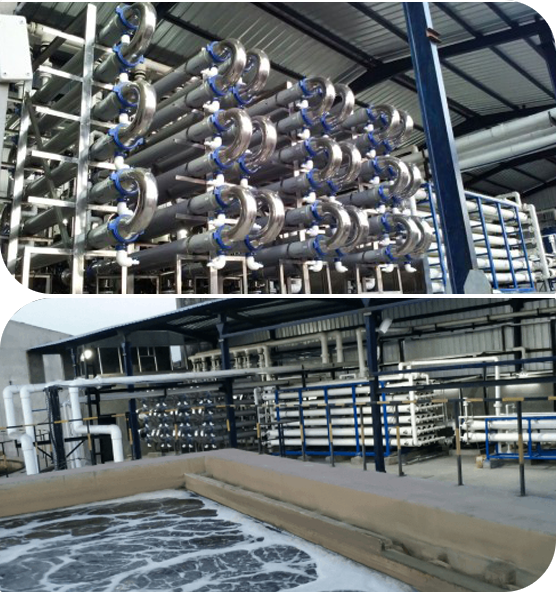
Waterman Engineers Australia is without doubt one of the foremost suppliers of Zero Liquid Discharge system. A ZLD method is actually a treatment method course of action which happens to be used to eliminate many of the liquid squander from a program. The aim of ZLD water treatment is to reduce wastewater economically and produce potable h2o that is definitely in shape for standard use. Zero discharge program is an advanced procedure strategy that comprises ultrafiltration, reverse osmosis, evaporation and fractional electro deionization. And we're a well-recognised supplier of ZLD methods.
In several Industries, for example electric power, oil & gasoline, chemicals, mining and Many others, a large amount of wastewater is created that must be managed. Conventionally, this discharge of wastewater is finished through a plant outfall to a floor h2o entire body like an evaporation pond, or occasionally deep properly injected. These practices cause many environmental worries by the general public in many areas of the whole world, as water is often a scarce resource and its management must be monitored. These fears have resulted inside the institution of ZLD processes by a lot of industries to reduce their environmental footprint and enhance sustainability. And, Waterman Engineers Australia are greatest ZLD suppliers you can find for this system.
Qualities OF ZERO LIQUID DISCHARGE Process
The Attributes of the Zero Liquid Discharge system may vary depending upon the particular design and style and know-how applied. Having said that, some common properties of ZLD devices include:
Water Conservation: Certainly one of the main objectives of ZLD units would be to preserve drinking water by reducing the discharge of liquid waste into your natural environment.
Substantial H2o Purity: ZLD methods are built to make substantial-top quality water that is no cost from impurities and contaminants, that makes them ideal for use in several industrial procedures.
Versatility: ZLD devices are sometimes developed to support a broad number of input liquid streams, that makes them adaptable and suitable for use in various industries.
Superior Wastewater Treatment: Zero liquid discharge devices use Superior wastewater procedure ways to take out impurities and contaminants through the effluent, producing substantial-quality drinking water.
Squander Reduction: ZLD systems support cut down waste by minimizing the quantity of liquid squander that needs to be disposed of and by making a concentrated, good waste materials that could be properly disposed of.
Power Effectiveness: ZLD devices can be Power-intensive a result of the superior energy needs of evaporation together with other wastewater procedure procedures. However, developments in engineering are generating Zero liquid discharge programs additional Electricity-economical and price-productive.
Waterman Engineers Australia manufactures Zero Liquid Discharge (ZLD) devices built to clear away all liquid waste, aiming to supply potable water and minimize environmental impact. Their ZLD units ordinarily include things like ultrafiltration, reverse osmosis, evaporation, and fractional electro deionization. Critical technologies utilized are Slipping Film Brine Concentrators, Forced Circulation Crystallizer, and Many others, that has a two-phase technique of pre-focus and evaporation/crystallization to Recuperate and reuse water. These devices are adaptable to distinct industries, emphasizing water conservation, significant water purity, squander reduction, and Vitality performance. Specialized specifications are diversified and customizable, thinking about factors like drinking water resource, circulation rate, and feed drinking water quality.
The need for Zero Liquid Discharge (ZLD) units arises with the requirement to address environmental problems linked to drinking Zld System Manufacturer Zero Liquid Discharge System water scarcity and air pollution. In industries like electrical power, oil & gasoline, and mining, vast amounts of wastewater are produced. Customarily, this wastewater is discharged into bodies of water, triggering air pollution and depleting clean water assets. ZLD units aim to minimize these impacts by dealing with and recycling wastewater within just the economic procedure, thereby conserving drinking water, minimizing squander, and endorsing sustainability.
When considering the specialized specs of a Zero Liquid Discharge (ZLD) technique, significant areas to focus on consist of the water source it'll deal with, the program's movement charge, the quality of feed water, the stages of treatment associated, the Restoration amount of drinking water, approaches for concentrate disposal, components of construction, operating disorders, and procedure automation and Regulate. These components ensure the method's effectiveness, longevity, and effectiveness in treating and recycling industrial wastewater.
Zero Liquid Discharge (ZLD) crops offer you Positive aspects like h2o conservation, waste reduction, and air pollution prevention, contributing to environmental sustainability. They are applicable in industries like energy technology, oil and gasoline, chemicals, and mining, where by they help in running industrial wastewater proficiently, lowering the ecological footprint, and complying with strict environmental restrictions. These methods are very important in places facing drinking water scarcity and for industries aiming to further improve their sustainability and operational efficiency.
FAQs for your Zero Liquid Discharge (ZLD) program normally deal with its operational rules, cost-efficiency, routine maintenance needs, environmental effects, applicability across different industries, and regulatory compliance. These issues assist end users have an understanding of the program's Added benefits, technological demands, and suitability for their certain wastewater administration requires.
one. Zero Liquid Discharge (ZLD) is really a wastewater remedy course of action meant to get rid of all liquid squander.
2. The procedure's components are influenced by the precise industrial procedure, wastewater composition, and regulatory necessities.
3. Effluent remedy vegetation take away pollutants from textile effluents to forestall environmental contamination.
four. Strengths involve h2o conservation, air pollution reduction, and regulatory compliance.
five. The purpose is to reduce environmental effect by recycling water and lowering waste.
six-nine. Effluent treatment method vegetation are stages in wastewater treatment: primary (Actual physical separation), secondary (Organic remedy), and tertiary (Innovative remedy).
10. Device operations include filtration, sedimentation, Organic remedy, and disinfection.
11. Restricting parameters are aspects that impact the treatment's performance, like pH and contaminant concentration.
twelve. Design and style concerns include stream charge, effluent composition, and preferred high-quality of dealt with water.